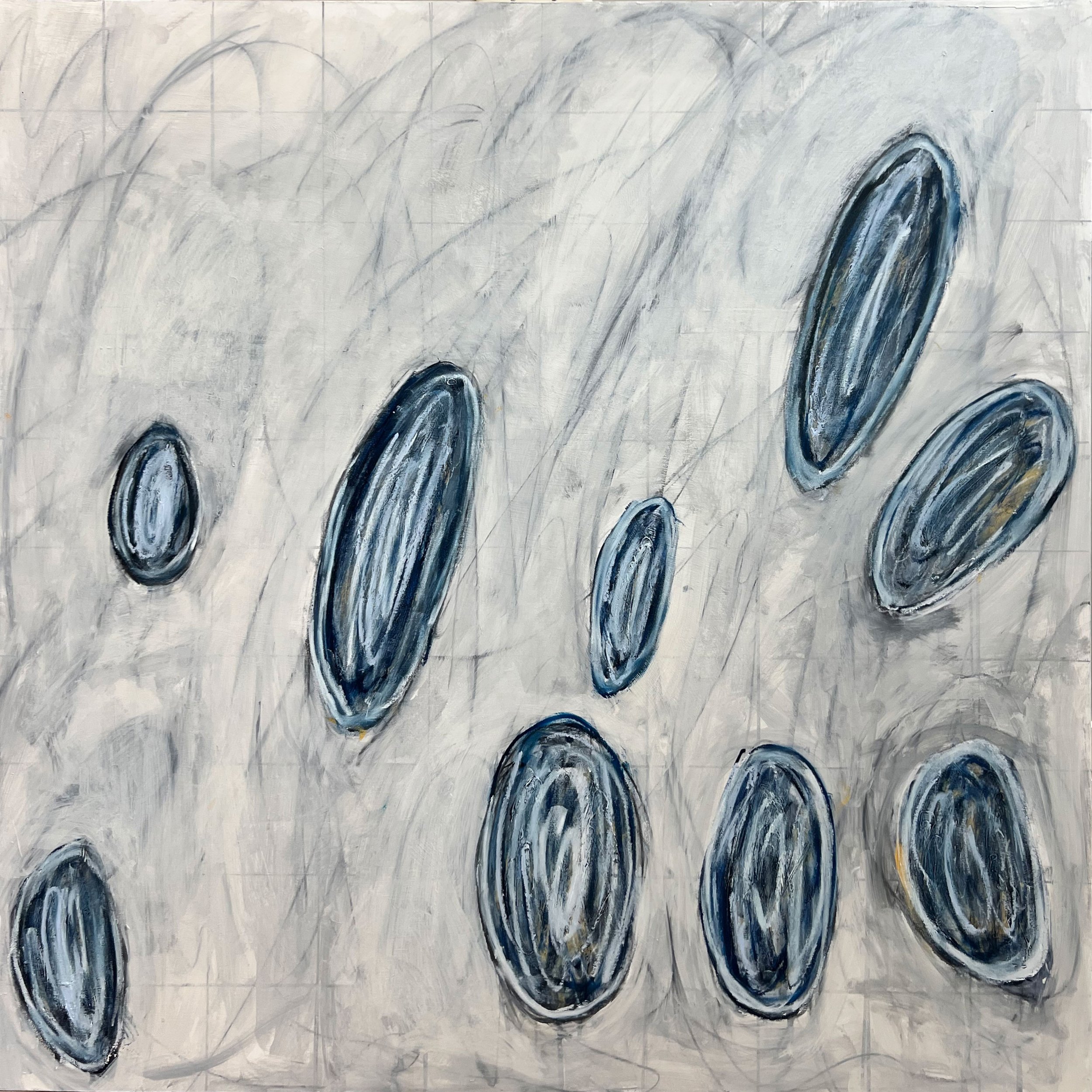
artist statment
Arnie Kozak, born in 1963 in New York City, is an abstract artist living and working in Asheville, amidst the western mountains of North Carolina, USA. During his college years at Tufts University he took studio courses at the School for the Museum of Fine Arts in Boston, USA. In 2017 he received an MFA in creative nonfiction from the Bennington Writing Seminars. During the intervening decades between college and Bennington, he was a practicing psychologist, psychotherapist, and author with an interest in mindfulness, metaphor, and the limitations imposed by language on experience.
Kozak’s oeuvre explores the relationship of deliberate control with chaos, randomness, and accident—creating a visual vocabulary that reflects life’s situation where choices and circumstances are reacted to, accepted or rejected, or modified. The written and spoken word can only approximate lived experience. In the work, calligraphic-like marks, carrying no connotation in themselves, represent an abstraction of the written word as the symbolization of storied meaning. Their energy points directly to experience as it unfolds in the moment, freeing the viewer (and the artist) from the limitations imposed by the worlds that words create.
Technique—that blurs the line between painting and drawing—is driven by the energies of control and spontaneity rather than technique per se. The pieces do not seek to resolve themselves in ways that are misleading to the larger questions in life, leaving the viewer with the unfinished edge of existence where impermanence, instability, and unpredictability persist, despite devoted efforts to the contrary. Where such control is presented in the art world, it represents a hopefulness, an ideal that belies the truth of lived experience—one that is always becoming and never arriving.
Kozak is currently on the Collections Committee of the Black Mountain College Museum + Arts Center in Asheville, North Carolina.
Lines of work
-

Emergence
Emergence is a conversation between the random gesture and the curated line. Each work starts with a non-consciously controlled set of glyphs or calligraphic-like lines. Colors and forms emerge as the conversation progresses until some sense of resolution—or rest—emerges. Wood panel permits drawing and the ready incorporation of other media such as graphite, charcoal, pastel, and water color crayon.
-

Stochastic
These smaller format works on canvas are all over works that express the power of randomness—none of the gestures are consciously controlled. Colors are curated by conscious choice. Each piece is a moment of energy, a dance that reflects the presence of randomness—impermanence—in daily life.
-

"Landscapes"
The “Landscape” paintings start with a cropped, close-up landscape photograph as inspiration. Instead of realism, they depart from the literalness of the photograph to develop their own character. Each photograph could—in principle—be the source of many unique interpretations. These are large scale multitychs on wood panel that permits use of mixed media—charcoal, pastel, watercolor crayon.
-

Calligraphy
These pieces start with automatic calligraphic like marks that then cohere themselves into dynamic, energetic forms with subtle color. Each mark says something different as no two moments are quite the same.
-

Cloud Collections
The clouds in the Carolinas are magnificent— they always seem to be trying to outdo themselves. “Carolina” represents a preoccupation with clouds and its 108 images were curated from over 500 photographs that were then cropped and mounted on cradled canvas. The grid format of individually hung pieces allows for re-arranging and swapping of the images providing a potentially infinite canvas. While the original “Carolina” is not for sale, custom configurations can be created on commission.